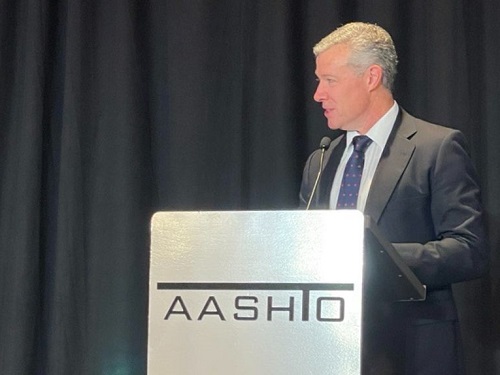The opening session of the 2024 Safety Summit hosted by the American Association of State Highway and Transportation Officials this week in Houston outlined the “ongoing crisis” in terms of U.S. traffic fatality numbers to an audience comprised of state departments of transportation, federal and local government agencies, private industry, and other stakeholders.
[Above photo of Jim Tymon by AASHTO]
“We are still experiencing a crisis with the number of fatalities we are seeing across our transportation network – that’s why it is crucial to get together in venues like this to continue to talk and share ways to drive those numbers down,” explained Jim Tymon, AASHTO’s executive director, in his opening remarks at the summit.
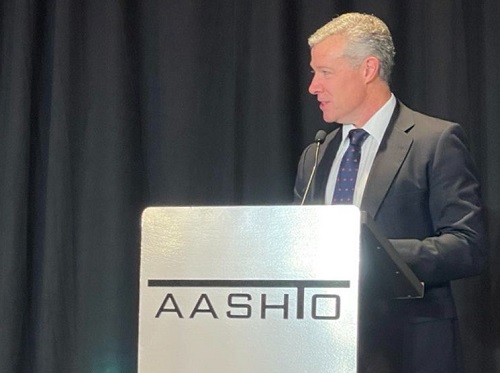
“Though [traffic fatality] numbers are falling, we won’t reach an acceptable level until get to zero,” he said. “I speak for all AASHTO members when I say state DOTs have no higher or urgent priority than safety. And attendance at last year’s and this year’s [safety] summit really does demonstrate that.”
“This summit is all about sharing our safety approaches and how we can continue to build on them at the [AASHTO] annual meeting; building further on that momentum to make safety improvements across the transportation system,” noted Garrett Eucalitto, commissioner of the Connecticut Department of Transportation and AASHTO’s president.
“But it is sobering to think about the number of [traffic] fatalities we still experience as a nation,” he stressed. “It means we have a lot more work to do as state DOTs.”
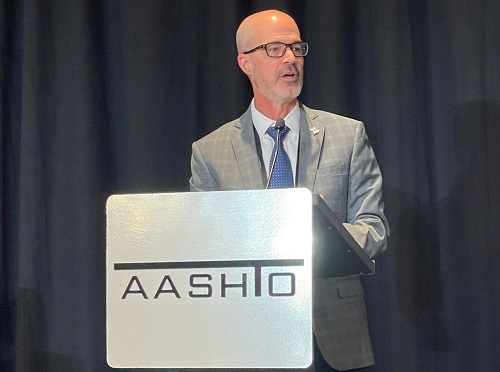
Marc Williams – executive director of the Texas Department of Transportation and chair of AASHTO’s rail council – noted that improving the safety culture within state DOTs will be critical to that work.
“There is no single greater purpose to us as a state DOT than our emphasis and focus on safety,” he explained. “And I argue that our personnel face more safety challenges than ever before; especially when it comes to safety in highway work zones. So addressing our own operations and activities will be key to improving that as we build a stronger culture of safety within our state DOT.”
John Milton – director of transportation safety and systems analysis for the Washington State Department of Transportation and chair of AASHTO’s Committee on Safety – emphasized Williams’ perspective on the need to grow a more “intensive” internal mindset when it comes to safety.
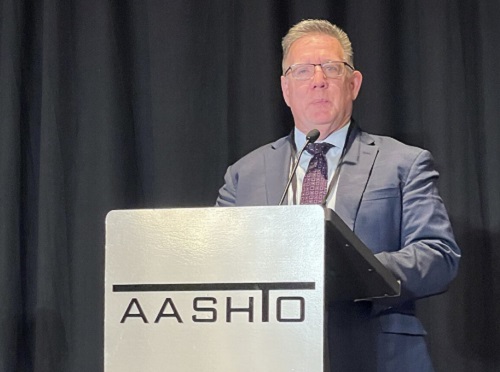
“Road safety is not just a policy, a standard or assignment; it is a promise we make to every life on the road,” he explained. “We are not addressing dots on a map; we are committing to safeguard family, friends, and our future. That is why we must transform roads to ensure every life is protected.”
Milton pointed out that requires work to strengthen all parts of the nation’s transportation system, beyond the simple acknowledgment of road safety, to recognize the need to address safety needs for all roads users.
“That is why this summit is a call to action to learn from peers, to innovate, and to move forward with solutions that make our roads safer than they have ever been,” he said. “By doing that, we can collectively drive down crashes and save countless lives on our roadways. But this journey will be a long one; a marathon. That is what fostering a culture of responsibility for safer roads for all requires.”
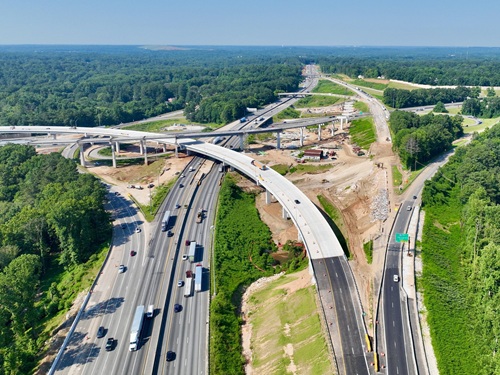 Top Stories
Top Stories
How Rising Construction Costs Could Impact Reauthorization
November 14, 2025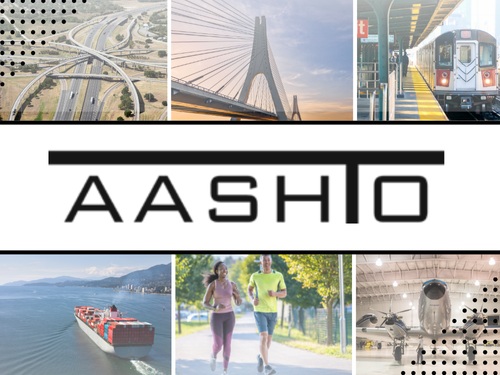 Top Stories
Top Stories
